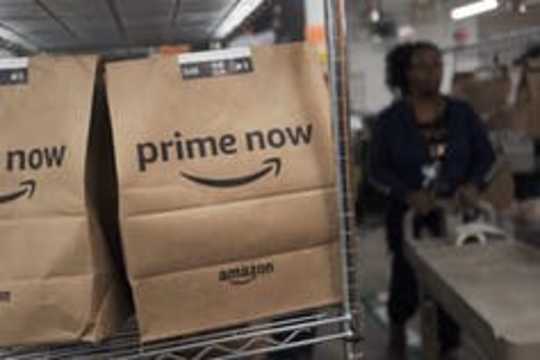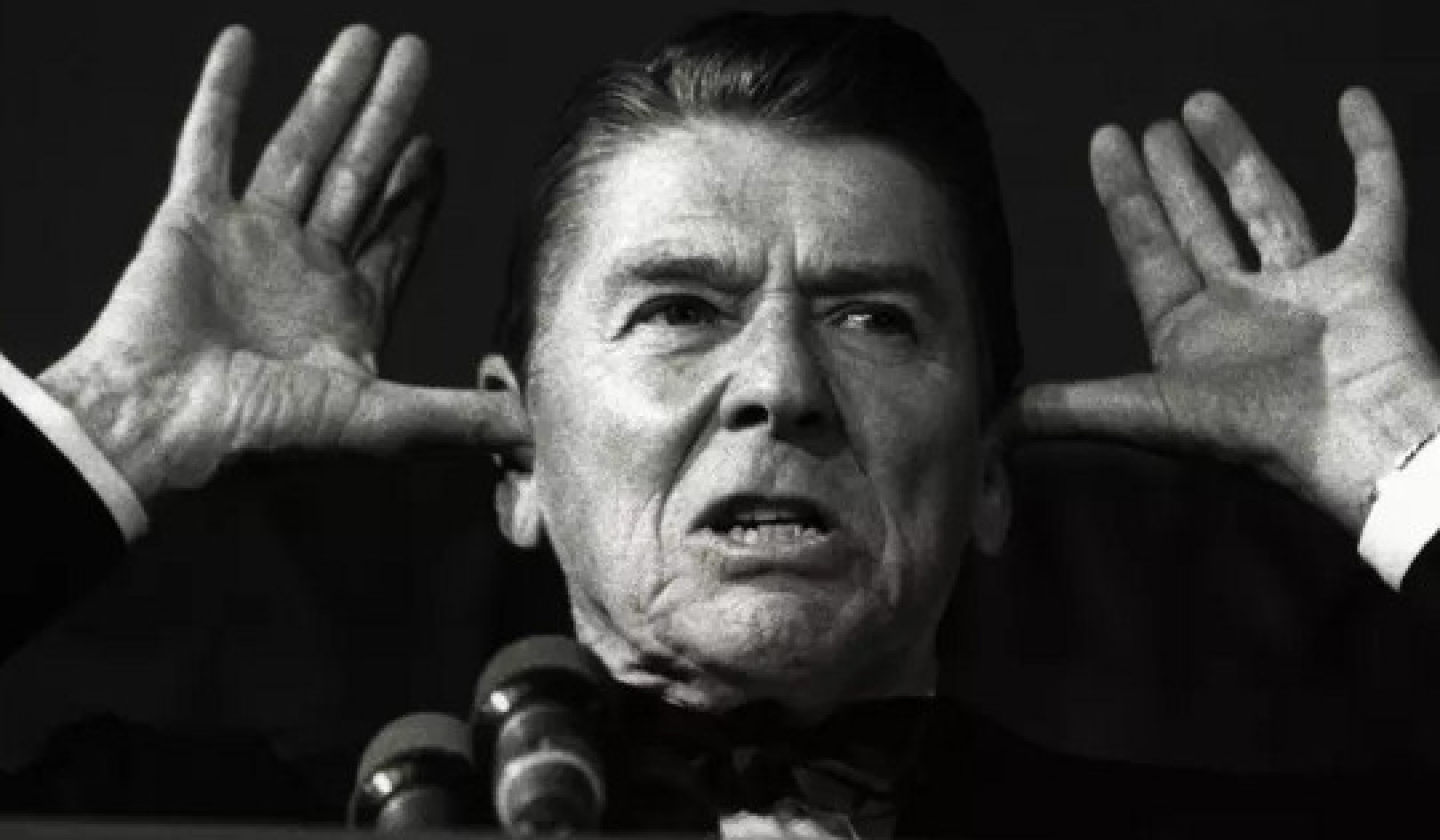 The ability of online retailers to offer next-day delivery service for an annual fee or at an affordable price has dynamically changed the retail business and shifted sales from in-store to online. (Clay Banks/Unsplash)
The ability of online retailers to offer next-day delivery service for an annual fee or at an affordable price has dynamically changed the retail business and shifted sales from in-store to online. (Clay Banks/Unsplash)
The year 2019 will be known as the year of retail closures in Canada and the United States. Canada’s Home Outfitters and Payless ShoeSource have recently announced they’re beginning to close all retail outlets.
These companies are not alone, as 2019 will see more than 9,000 retailer closures in North America. Some of the largest include The Gap and Forever 21, closing 230 and 178 stores respectively. Other notable retailers on the list include Pier 1 Imports (14 stores), Bed Bath and Beyond (60 stores) and Things Remembered (200 stores).
The Amazon Prime effect
Many retailers are experiencing what I have dubbed The Prime Effect in reference to Amazon Prime. The ability of online retailers to offer next-day delivery service for an annual fee or at an affordable price has dynamically changed the retail business and shifted sales from in-store to online.
 Prime Now customer orders are ready for delivery at the Amazon warehouse in New York. (AP Photo/Mark Lennihan)
Prime Now customer orders are ready for delivery at the Amazon warehouse in New York. (AP Photo/Mark Lennihan)
It’s now more convenient and equally economical to shop online compared to in-store. With the holiday shopping season upon us, the biggest retail question remains unanswered. How do physical retailers increase in-store sales?
This question is not only important during the holiday season, it remains top of mind for retailers all year round. My interest in this as a research topic evolved from my PhD studies. Now, as a faculty member in the Department of Management and Marketing at the University of Saskatchewan’s Edwards School of Business, I am exploring how retailers can remain financially successful in the wake of The Prime Effect.
The answer to this all-important question relates to retail innovation.
Innovation, financial performance linked
In my forthcoming study of 225 Canadian retailers to be published in the Wiley Online Library, innovation was found to have a direct impact on financial performance. Specifically, innovation was the missing link between retailers’ employee work ethic, customer orientation and financial performance.
But employing a customer orientation approach — an organizational-wide commitment to understanding and serving the needs of the target market — and having a motivated workforce was not enough to enhance retailers’ sales, margins or profits.
Retailers that were highly innovative, however, outperformed their non-innovative competitors. This finding is supported by other prominent research that has suggested innovation is the missing link between strategies and company performance, but I demonstrated its importance among retailers.
Retail innovations, of course, include new products and services but also personalized shopping experiences and unique loyalty programs, to name just a few.
Personalized shopping experiences can be implemented that mirror online analytics, permitting salespeople to use customer information to make recommendations. Unique loyalty programs can offer regular customers first access to new inventory, creating stronger brand loyalty and in-store sales.
Changing the environment
While strategy is a process, innovation is a way of thinking about strategy. Innovation requires environmental changes at companies that support new ways of thinking. Changing the environment requires new actions and behaviours of both management and employees.
Although innovation is typically thought of as creating those novel products and services, it also includes the environmental changes within organizations that support innovative thinking. Innovation thought leaders, in fact, suggest companies should invest as much as 10 per cent in innovation, and divest of activities that fail to add value by the same amount.
The first step is understanding the importance of innovation. The second step involves the willingness to dedicate resources to innovation. The final, most critical step is all about innovation implementation.
Implementing innovation
According to American academic Peter Senge, named Strategist of the Century by Journal of Business Strategy, it’s the job of senior leadership to create an organization’s culture. Therefore, top management must be committed to creating an innovative culture. In order for an innovative culture to be successful, it also requires employee buy-in at all levels.
 Loyalty programs can help build loyalty and encourage in-store purchases. THE CANADIAN PRESS
Loyalty programs can help build loyalty and encourage in-store purchases. THE CANADIAN PRESS
It’s clear that during this holiday season and beyond, retailers need to embrace innovation. They must have a workforce that is motivated as well as one that is customer-oriented, but innovation is what will truly set the top-performing retailers apart.
Regardless of the innovation strategy, it’s integral to the success of Canadian retailers. Perhaps the greatest strategic risk is not innovating and failing, but failing to innovate at all.
About The Author
Grant Alexander Wilson, Department of Management & Marketing, Edwards School of Business, University of Saskatchewan
This article is republished from The Conversation under a Creative Commons license. Read the original article.
Recommended books:
Capital in the Twenty-First Century
by Thomas Piketty. (Translated by Arthur Goldhammer)
 In Capital in the Twenty-First Century, Thomas Piketty analyzes a unique collection of data from twenty countries, ranging as far back as the eighteenth century, to uncover key economic and social patterns. But economic trends are not acts of God. Political action has curbed dangerous inequalities in the past, says Thomas Piketty, and may do so again. A work of extraordinary ambition, originality, and rigor, Capital in the Twenty-First Century reorients our understanding of economic history and confronts us with sobering lessons for today. His findings will transform debate and set the agenda for the next generation of thought about wealth and inequality.
In Capital in the Twenty-First Century, Thomas Piketty analyzes a unique collection of data from twenty countries, ranging as far back as the eighteenth century, to uncover key economic and social patterns. But economic trends are not acts of God. Political action has curbed dangerous inequalities in the past, says Thomas Piketty, and may do so again. A work of extraordinary ambition, originality, and rigor, Capital in the Twenty-First Century reorients our understanding of economic history and confronts us with sobering lessons for today. His findings will transform debate and set the agenda for the next generation of thought about wealth and inequality.
Click here for more info and/or to order this book on Amazon.
Nature's Fortune: How Business and Society Thrive by Investing in Nature
by Mark R. Tercek and Jonathan S. Adams.
 What is nature worth? The answer to this question—which traditionally has been framed in environmental terms—is revolutionizing the way we do business. In Nature’s Fortune, Mark Tercek, CEO of The Nature Conservancy and former investment banker, and science writer Jonathan Adams argue that nature is not only the foundation of human well-being, but also the smartest commercial investment any business or government can make. The forests, floodplains, and oyster reefs often seen simply as raw materials or as obstacles to be cleared in the name of progress are, in fact as important to our future prosperity as technology or law or business innovation. Nature’s Fortune offers an essential guide to the world’s economic—and environmental—well-being.
What is nature worth? The answer to this question—which traditionally has been framed in environmental terms—is revolutionizing the way we do business. In Nature’s Fortune, Mark Tercek, CEO of The Nature Conservancy and former investment banker, and science writer Jonathan Adams argue that nature is not only the foundation of human well-being, but also the smartest commercial investment any business or government can make. The forests, floodplains, and oyster reefs often seen simply as raw materials or as obstacles to be cleared in the name of progress are, in fact as important to our future prosperity as technology or law or business innovation. Nature’s Fortune offers an essential guide to the world’s economic—and environmental—well-being.
Click here for more info and/or to order this book on Amazon.
Beyond Outrage: What has gone wrong with our economy and our democracy, and how to fix it -- by Robert B. Reich
 In this timely book, Robert B. Reich argues that nothing good happens in Washington unless citizens are energized and organized to make sure Washington acts in the public good. The first step is to see the big picture. Beyond Outrage connects the dots, showing why the increasing share of income and wealth going to the top has hobbled jobs and growth for everyone else, undermining our democracy; caused Americans to become increasingly cynical about public life; and turned many Americans against one another. He also explains why the proposals of the “regressive right” are dead wrong and provides a clear roadmap of what must be done instead. Here’s a plan for action for everyone who cares about the future of America.
In this timely book, Robert B. Reich argues that nothing good happens in Washington unless citizens are energized and organized to make sure Washington acts in the public good. The first step is to see the big picture. Beyond Outrage connects the dots, showing why the increasing share of income and wealth going to the top has hobbled jobs and growth for everyone else, undermining our democracy; caused Americans to become increasingly cynical about public life; and turned many Americans against one another. He also explains why the proposals of the “regressive right” are dead wrong and provides a clear roadmap of what must be done instead. Here’s a plan for action for everyone who cares about the future of America.
Click here for more info or to order this book on Amazon.
This Changes Everything: Occupy Wall Street and the 99% Movement
by Sarah van Gelder and staff of YES! Magazine.
 This Changes Everything shows how the Occupy movement is shifting the way people view themselves and the world, the kind of society they believe is possible, and their own involvement in creating a society that works for the 99% rather than just the 1%. Attempts to pigeonhole this decentralized, fast-evolving movement have led to confusion and misperception. In this volume, the editors of YES! Magazine bring together voices from inside and outside the protests to convey the issues, possibilities, and personalities associated with the Occupy Wall Street movement. This book features contributions from Naomi Klein, David Korten, Rebecca Solnit, Ralph Nader, and others, as well as Occupy activists who were there from the beginning.
This Changes Everything shows how the Occupy movement is shifting the way people view themselves and the world, the kind of society they believe is possible, and their own involvement in creating a society that works for the 99% rather than just the 1%. Attempts to pigeonhole this decentralized, fast-evolving movement have led to confusion and misperception. In this volume, the editors of YES! Magazine bring together voices from inside and outside the protests to convey the issues, possibilities, and personalities associated with the Occupy Wall Street movement. This book features contributions from Naomi Klein, David Korten, Rebecca Solnit, Ralph Nader, and others, as well as Occupy activists who were there from the beginning.
Click here for more info and/or to order this book on Amazon.























